Approaching the Rural Abandonment in Twentieth Century Romania: Political Decisions, Strategies, and Intervention Projects
Abstract
Il saggio si concentra su due studi di caso situati in Romania (Dioști, contea di Dolj e Antonești, contea di Argeș). Oltre a essere rappresentativi dell'attuale tendenza allo spopolamento delle aree rurali, i due casi hanno una particolare rilevanza in quanto nati come "villaggi modello" nell'ambito dell'iniziativa di riorganizzazione del territorio nazionale rurale tra le due guerre. La costruzione di entrambi i villaggi durante il periodo 1938-1944 fu una risposta diretta alla distruzione causata da calamità devastanti nelle due aree rurali e fu dunque vista come un'opportunità per mettere in pratica le teorie sul "villaggio modello" basate su su ampi studi dei sociologi in merito alla ricostituzione ideale del mondo rurale rumeno. Negli anni tra le due guerre, la riorganizzazione dei territori rurali rappresentava un problema costante per intellettuali e professionisti e il contadino era considerato un protagonista importante del costrutto identitario della moderna nazione rumena. Quest'idea si riflette nella considerevole quantità di opere (ricerche e studi, teorie e strumenti operativi) promosse durante il periodo interbellico. La Romania affrontò una svolta politica radicale dopo la Seconda guerra mondiale, avviandosi verso il Comunismo. L'industrializzazione e l'urbanizzazione sembrano essere i topos di questo racconto, anche se esiste un corpus consistente di opere e progetti che dimostrano l'interesse per la sistematizzazione e la riorganizzazione dei territori rurali durante il comunismo. Il saggio propone una lettura su tre livelli sull'interesse di questo fenomeno, che tiene conto dell’approccio tecnico adottato a seguito delle riforme agrarie e della ricerca di soluzioni per affrontare i cambiamenti nell’organizzazione della proprietà terriera, nonché delle previsioni per il futuro del territorio nazionale in termini di sviluppo economico e anche per la costruzione di una nuova identità nazionale. Inoltre, nel contesto contemporaneo dominato dal fenomeno dello spopolamento, il riferimento ai due studi di caso si collega ai miti moderni che pervadono l'immaginario della cultura rumena.
The paper is centered on two case studies located in Romania (Dioști, Dolj county and Antonești, Argeș county). Besides the fact that both are representative of the current rural depopulation trend in Romania, the two case studies have a particular relevance due to their initial role as “model villages”, created during the interwar period, as part of the initiative of (re)organizing the rural national territory. The design and construction of both villages during 1938-1944 was a direct response to the destruction caused by devastating calamities in two rural areas. Their reconstruction was viewed as an opportunity to put into practice the already drafted theoretical ideas concerning the “model village,” based on extensive sociological research and on the interest and perspective of interwar sociologists on the ideal restructuring of the Romanian rural realm. The reorganization of the rural territories represented a constant issue for the (Romanian) intellectuals and professionals and the peasant was a substantial element of the identitarian construct of the modern Romanian nation. This idea reflects in the considerable amount of works (researches and studies, theories and operational instruments) issued during the interwar time. Romania faced a radical political turn after the Second World Word, becoming a country positioned on the road toward communism. Industrialization and urbanization seem to represent the great narrative from this point of view, although there is a significantly consistent body of works (designing typologies included) demonstrating the interest in the systematization and reorganization of the rural territories during communism. A three layered perspective over the common interest for the rural world in order to better place in this larger context the relevance of the two case studies and to identify the reasons that forged these initiatives is here proposed. The three layered perspective takes into account a technical approach placed in the aftermath of the agrarian reforms and finding solutions for the consequences of the changes in the land ownership, the previsions for the future of the national territory (in terms of economical development) and the idealist point of view that connects the fundamental elements of the identitarian construct. Still, in the contemporary context dominated by the depopulation trend, the reference to the two case studies seems to be magnetized by their idealized force connected to the modern myths present in the imaginary of Romanian culture. Our interest is to understand What should be the perspective on the two case studies (models for the idealization of the rural world) in the context of rural depopulation (Romanian realities).
Parole chiave
Full Text
PDF (English)DOI: https://doi.org/10.14633/AHR411
Refback
- Non ci sono refbacks, per ora.
Copyright (c) 2024 Emilia Tugui, Oana Cristina Tiganea, Irina Tulbure-Moldovan, Diana Mihnea

This work is licensed under a Creative Commons Attribution-NonCommercial 4.0 International License.
........................................................................................................................................................................................................................................................................................................................................................
ArcHistoR è una rivista open access e peer reviewed (double blind), di Storia dell’architettura e Restauro, pubblicata dall’Università Mediterranea di Reggio Calabria. La rivista ha cadenza semestrale. È una rivista di Classe A (ANVUR) per l’Area 08 - Ingegneria civile ed Architettura, settori C1, D1, E1, E2, F1.
Comitato scientifico internazionale
Maria Dolores Antigüedad del Castillo-Olivares (Universidad Nacional de Educación a Distancia de España), Monica Butzek (Kunsthistorisches Institut in Florenz), Jean-François Cabestan (Université Paris 1 - Panthéon Sorbonne), Alicia Cámara Muñoz (Universidad Nacional de Educación a Distancia de España), David Friedman (Massachussets Institute of Technology), Alexandre Gady (Université Paris-IV-Sorbonne), Jörg Garms (Universität Wien), Miles Glenndinning (Scottish Centre for Conservation Studies, University of Edinburgh), Mark Wilson Jones (University of Bath), Loughlin Kealy (University College Dublin), Paulo Lourenço (Department of Civil Engineering, University of Minho), David Marshall (University of Melbourne), Werner Oechslin (ETH, Zurich, Stiftung Bibliothek Werner Oechslin, Einsiedeln), José Luis Sancho (Dirección de Conservación de Bienes Histórico-Artísticos, Palacio Real, Madrid), Dmitrij O. Švidkovskij (Moscow Architectural Institute, MARCHI)
Comitato direttivo
Tommaso Manfredi (direttore responsabile), Giuseppina Scamardì (direttore editoriale), Antonello Alici, Salvatore Di Liello, Fabrizio Di Marco, Paolo Faccio, Mariacristina Giambruno, Bruno Mussari, Annunziata Maria Oteri, Francesca Passalacqua, Edoardo Piccoli, Renata Prescia, Nino Sulfaro, Fabio Todesco, Guglielmo Villa
........................................................................................................................................................................................................................................................................................................................................................
Laboratorio CROSS. Storia dell'architettura e Restauro

ISSN 2384-8898

This work is licensed under a Creative Commons Attribution-NonCommercial 2.0 Generic License.

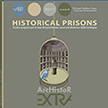
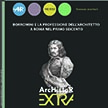
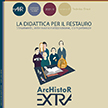

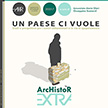
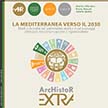
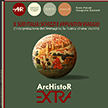
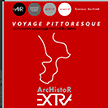
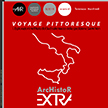
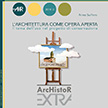
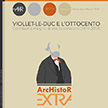

_2.jpg)



